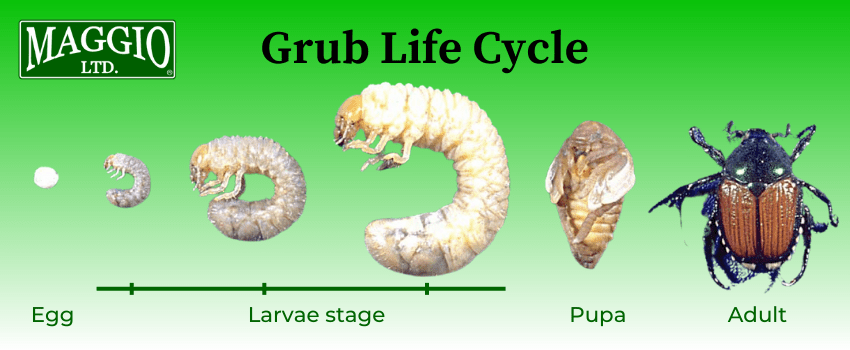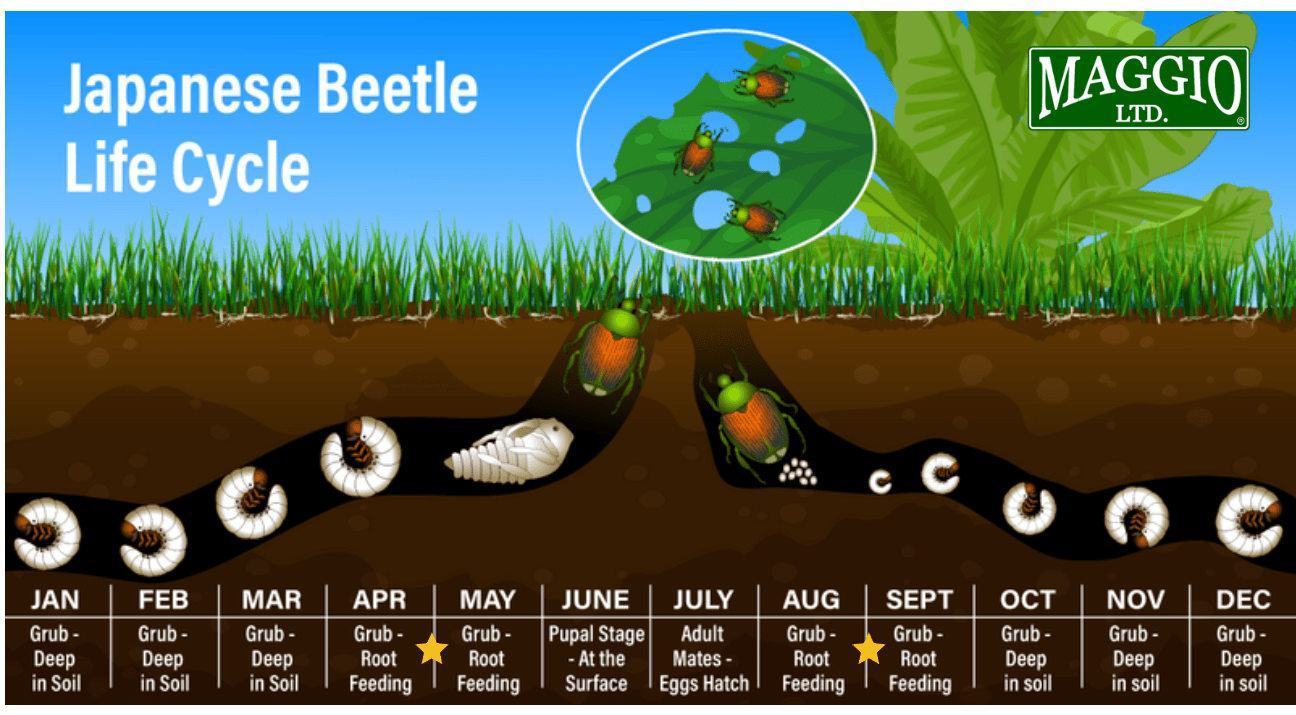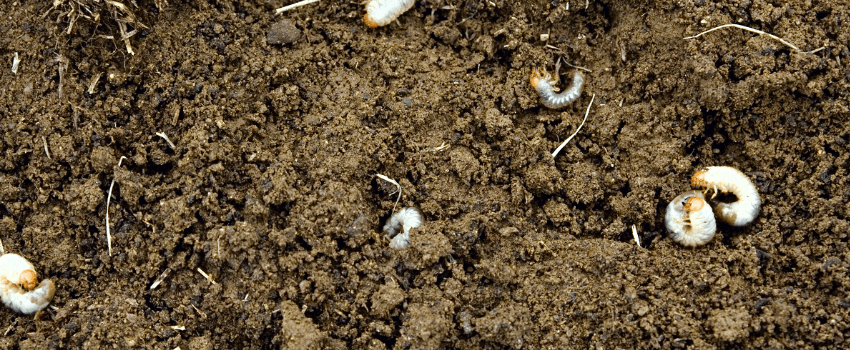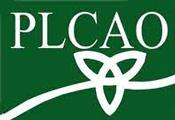Living in Ontario, if you have a lawn, more than likely you have grubs. But you might be wondering, what exactly are grubs and how do I get rid of them?
What are grubs?
Grubs -also called “grub worms” or “lawn worms” – are the larvae (immature form) of certain types of beetles. In Ontario, they are usually white or yellowish in colour with beige head and c-shaped. Depending on the beetle, they range from 1/4″-2″ during their larvae life stage.
Similar to how a caterpillar forms a cocoon before turning into a butterfly, the grubs will forma pupa before reaching their adult stage where they become a beetle.

Types of lawn grubs
In Ontario, there are three main species of white grubs which infest lawns:
- European chafer
- June beetle
- Japanese beetle
All three species cause considerable damage to turfgrass, the Japanese and June beetle being the most harmful and also love to infests certain trees and shrubs.
How grubs damage your lawn
Grubs are an invasive species of pests that feed on your grass roots just beneath the surface of the soil under your turf. These little pests have the ability to completely destroy your lawn.
1. Feed on grassroots
They will damage or completely destroy the roots, reducing your lawn’s ability to absorb water and nutrients as well as withstand stresses like extreme heat or dryness.

2. Critters digging up the lawn
Grubs will not only cause the grass to wilt and die but they will also attract animals like birds, skunks or raccoons to tear up your lawn looking for the grubs as a food source.

Signs of lawn grubs
Damage from grubs can be very extensive and costly, so catching them at the first sign of damage is key. Below are some telltale signs you have lawn grubs:
- Odd-shaped patches or dead spots from root feeding
- Lawn feels spongy or loose when you walk on it
- Grass that pulls up like a carpet
- Critters like moles, birds, raccoons etc. digging up or feeding on your grass
- You can visually see grubs or beetles

How to get rid of grubs
Organic application of beneficial nematodes will get rid of grubs. Nematodes are tiny microscopic worms that are about 1/150th of an inch. They strictly hunt and kill grubs by penetrating them like parasites, causing them to die. It is an all-natural alternative to chemical pest control and won’t harm your lawn or other insects that are beneficial to the ecosystem.

Timing is everything
The grub life cycle is especially important when managing the infestation. In June-July adult beetles will lay eggs, that hatch into larvae (grubs) in August. In their early stages of life, the grub are closer to the surface of the soil while they feed, making them easiest to eliminate. By end of September the cooler weather may have already encouraged grubs to migrate downward, where treatment methods won’t reach them until they surface again in May of the following year for root feeding.

Summary
If you live in Ontario and have a lawn – you likely have grubs. Grubs can multiply quickly and will completely destroy your lawn if left untreated. Sometimes the damage is so extensive, it requires total lawn replacement. Don’t wait for the signs of grub damage – add grub control to your regular maintenance program to keep your lawn healthy and lush all year round.
Prevention is always better than revival. Lawn replacement is expensive and can be easily avoided. Trust the pros and add grub control to your fertilizer and weed control program.
Visit our services page or get a quote today.





 647-295-2805
647-295-2805
 info@maggio.ca
info@maggio.ca P.O. Box 812
P.O. Box 812